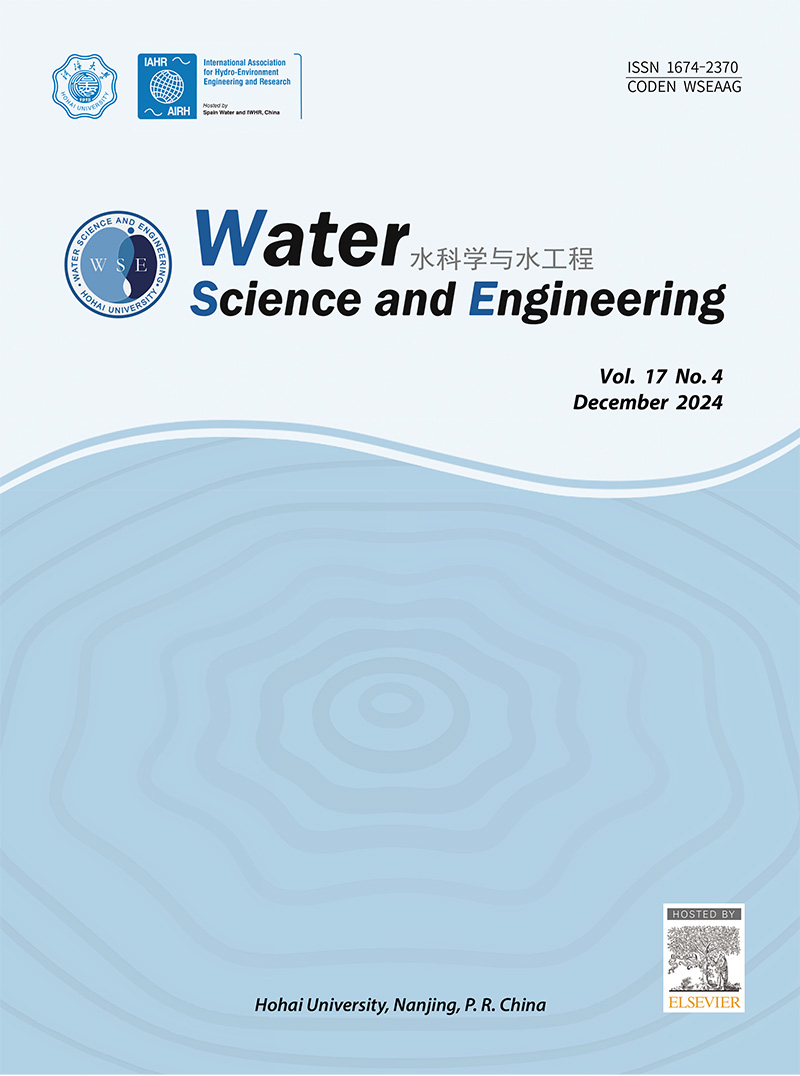瓦利迪亚泻湖的潮汐不对称和泥浆输送:2012 年的实际情况和修复方案
IF 4.3
Q1 WATER RESOURCES
引用次数: 0
摘要
摩洛哥瓦利迪亚泻湖(Oualidia Lagoon)的牡蛎养殖一直受到上游地区水质差和水体封闭的影响。潮汐不对称(TA)被认为是可能的原因之一,2011 年曾疏浚沉积物沉淀池以缓解这种状况。本研究采用实地测量和数值建模的方法,在有沉积物沉淀池的情况下研究泻湖中的潮汐不对称现象。研究结果表明,泻湖上游主要以洪水为主,在潮汐周期中,这里的摩擦力超过惯性加速度,细小沉积物沉积在潮滩和沉积物沉淀池内。然而,这项研究表明,大量悬浮沉积物被排入海洋,这与人们对洪水主导型泻湖的预期相反。将沉积物沉淀池定义为修复方案 S1,研究了另外三种方案对 TA 的影响。这三个方案分别是:方案 S2(疏浚主航道上游段)、方案 S3(疏浚洪水三角洲附近进水口的航道)和方案 S4(根据气候变化预测,将海平面提高 0.5 米)。结果表明,这些方案都没有改变泻湖的潮汐洪水主导地位,尽管方案 S2 和 S4 降低了上游地区的洪水强度。不过,所有情景仍会导致大量沉积物流入海洋。这表明,泻湖管理活动不应依赖通常预测洪水主导泻湖上游沉积物迁移的潮汐不对称分析。本文章由计算机程序翻译,如有差异,请以英文原文为准。
Tidal asymmetry and mud transport in Oualidia Lagoon: Actual conditions in 2012 and rehabilitation scenarios
Oyster aquaculture in Oualidia Lagoon, Morocco, has suffered from poor water quality and water confinement in its upstream region. Tidal asymmetry (TA) has been suggested as a possible cause, and a sediment trap was dredged in 2011 to mitigate this condition. This study addresses TA in the lagoon using field measurements and numerical modeling in the presence of the sediment trap. Results indicate that the lagoon is flood-dominated mostly in its upstream end, where frictional forces exceed inertia accelerations during the tidal cycle and fine sediments settle on the tidal flats and inside the sediment trap. However, this study shows that a large mass of suspended sediments is exported to the ocean, which is contrary to expectations in flood-dominated lagoons. Defining the sediment trap as the rehabilitation scenario S1, the impacts of three additional scenarios on TA are examined. These are scenario S2 (dredging the upstream section of the main channel), scenario S3 (dredging the channels surrounding the flood delta near the inlets), and scenario S4 (raising the ocean level by 0.5 m following climate change predictions). Results show that none of these scenarios modify the tidal flood dominance in the lagoon, although scenarios S2 and S4 decrease its intensity in the upstream region. Nevertheless, all scenarios still contribute to a significant export of sediments to the ocean. This suggests that lagoon management activities should not rely on tidal asymmetry analyses that normally predict upstream sediment transport in flood-dominated lagoons.
求助全文
通过发布文献求助,成功后即可免费获取论文全文。
去求助
来源期刊

Water science and engineering
WATER RESOURCES-
CiteScore
6.60
自引率
5.00%
发文量
573
审稿时长
50 weeks
期刊介绍:
Water Science and Engineering journal is an international, peer-reviewed research publication covering new concepts, theories, methods, and techniques related to water issues. The journal aims to publish research that helps advance the theoretical and practical understanding of water resources, aquatic environment, aquatic ecology, and water engineering, with emphases placed on the innovation and applicability of science and technology in large-scale hydropower project construction, large river and lake regulation, inter-basin water transfer, hydroelectric energy development, ecological restoration, the development of new materials, and sustainable utilization of water resources.
 求助内容:
求助内容: 应助结果提醒方式:
应助结果提醒方式:


